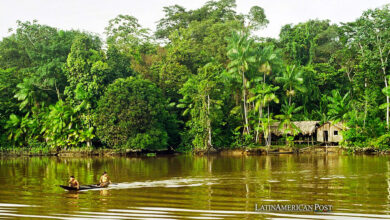How to properly educate people about the environment
On an unusually hot day in Los Alerces National Park, in Patagonia, Argentina, a tourist asked me if the white spot that crowned a mountain was limestone

It is necessary that people receive education about the environment, so that they can help with its preservation and conservation. / Photo: Unsplash
LatinamericanPost| Jorge Guasp
Listen to this article
Leer en español: Cómo educar adecuademente a la gente sobre el medio ambiente
It is snow, I answered. Impossible, the man refuted; if it was snow, in this heat it would have already melted
It is not enough to look and suppose; you need to understand
I explained to the visitor that, at around 2000 meters of altitude, the temperature is lower than next to a lake, and that this slope preserved the snow because it faced south, an orientation that, in the Southern Hemisphere, receives the least solar radiation.
The sense of sight, and our aesthetic criteria, provide a merely visual understanding of the reality that appears before our eyes. Tourists visiting Patagonia are fascinated by pine forests, unaware that these are foreign species, which have replaced the native forest and have invaded lands contiguous to that where they were implanted. Eradicating these pines is very difficult today, because the seeds accumulated in the soil originate thousands of new plants, whose extraction would require years of work.
A river may seem wonderful to us, even if we are unable to assess at a glance the quality of the water it carries. If someone tells us that the river is polluted, we may be disappointed. But if we manage to discover how human activity contaminates the river, where the contaminated water flows and to what extent it harms the populations located downstream, we will better understand the connections that exist between man and nature, and we will be able to denounce what happens, or to act to modify it.
Environmental interpretation reveals meanings and connections
“In the classroom, the teacher's goal is to communicate only facts, a long-term process necessary in the education of students. In interpretation, we only present aspects that help the audience understand and appreciate what we are trying to show or transmit to them, ”says Dr. Sam Ham, Professor at the University of Idaho, USA, in his book Environmental Interpretation, a Practical Guide for People with Big Ideas and Small Budgets.
Read also: Even animals benefit from social distance to prevent disease
Ham, one of the forerunners of environmental interpretation in the world, considers in his book that, to be effective, this discipline must meet four basic requirements:
- The environmental interpretation is pleasant, that is, it keeps the audience's attention.
- It has meaning, and it's personal . Information is meaningful when linked to knowledge we already have. As for it being personal, Ham argues that "the best communicators always try to link their ideas to the lives of their audiences." In short, it is about alluding to what is important to the people who receive the information.
- The interpretation is organized (easy to follow), and should be reduced (according to Ham) to no more than 5 main ideas, so that the audience does not get lost or bored, and also remember the information they receive.
- Interpretation has a theme. Sam Ham calls a message a "subject", thus differentiating it from the "topic" or title. In an interpretive presentation, for example, "the cloud forest" could be a topic. Ham argues, however, that that title does not include relevant data; and since audiences forget information easily, it is preferable to use a theme or message linked to people's lives: "the cloud forest conserves water and prevents floods," for example.
Environmental interpretation favors behavior change
We know that the information by itself is not relevant, nor does it promote behavioral changes. Often smoking death statistics are not enough for people to quit smoking. It is imperative that smokers experience certain emotions (fear of death or serious illness, for example) so that these force them to modify their harmful habit.
Something similar happens with behavioral changes towards nature. In reference to the cited examples, the information is not enough. Discovering in the soil the seed bank that originates new pines, or finding fish in the river that are dead from pollution, instead, provokes an emotion that promotes internal change in people.
Also read: Climate change will turn coastal Antarctica green, say scientists
"The purpose of the interpretation of heritage (natural and cultural) is to produce changes in the cognitive, affective and attitudinal fields of the visitor (Morgan, et al., 1997), and it is desirable that they can later manifest themselves in specific behaviors," he maintains. Jorge Morales Miranda, a Chilean interpreter based in Spain, in his work "The interpretation of heritage has to do with meanings", written for the Association for the Interpretation of Heritage, a Spanish non-profit organization.
In summary, environmental interpretation is the art of revealing meanings about natural and cultural resources, so that the population discovers them, values them, and contributes to their preservation through changes in attitude and behavior.





